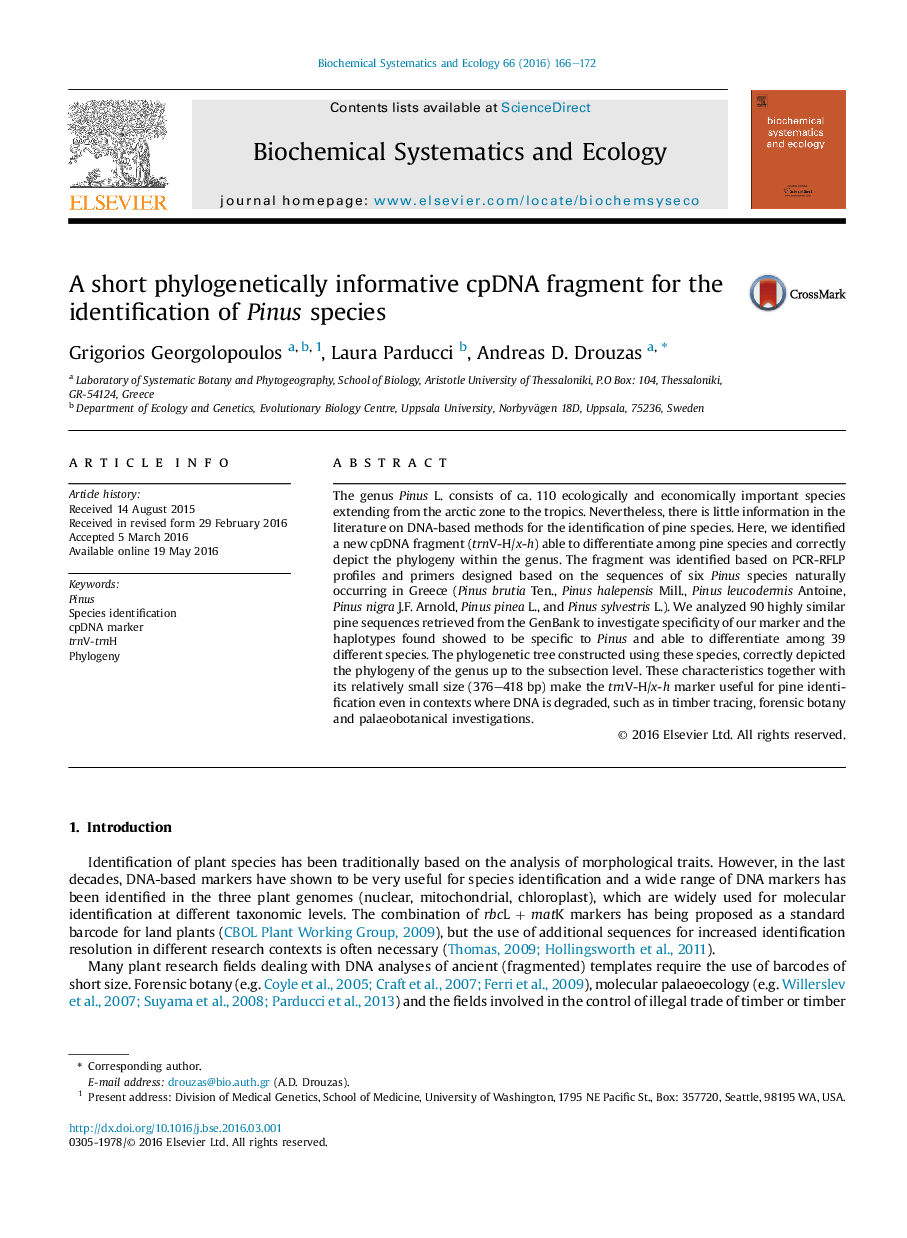| کد مقاله | کد نشریه | سال انتشار | مقاله انگلیسی | نسخه تمام متن |
|---|---|---|---|---|
| 1353752 | 1500400 | 2016 | 7 صفحه PDF | دانلود رایگان |

• A short cpDNA fragment/marker (trnV-H/xh) was detected able to differentiate among 39 Pinus species.
• trnV-H/xh phylogenetically described all species up to subsection level.
• trnV-H/xh is a useful marker for timber tracing and hybrid identification of pines and for forensic and paleobotanic analyses.
The genus Pinus L. consists of ca. 110 ecologically and economically important species extending from the arctic zone to the tropics. Nevertheless, there is little information in the literature on DNA-based methods for the identification of pine species. Here, we identified a new cpDNA fragment (trnV-H/x-h) able to differentiate among pine species and correctly depict the phylogeny within the genus. The fragment was identified based on PCR-RFLP profiles and primers designed based on the sequences of six Pinus species naturally occurring in Greece (Pinus brutia Ten., Pinus halepensis Mill., Pinus leucodermis Antoine, Pinus nigra J.F. Arnold, Pinus pinea L., and Pinus sylvestris L.). We analyzed 90 highly similar pine sequences retrieved from the GenBank to investigate specificity of our marker and the haplotypes found showed to be specific to Pinus and able to differentiate among 39 different species. The phylogenetic tree constructed using these species, correctly depicted the phylogeny of the genus up to the subsection level. These characteristics together with its relatively small size (376–418 bp) make the trnV-H/x-h marker useful for pine identification even in contexts where DNA is degraded, such as in timber tracing, forensic botany and palaeobotanical investigations.
Journal: Biochemical Systematics and Ecology - Volume 66, June 2016, Pages 166–172